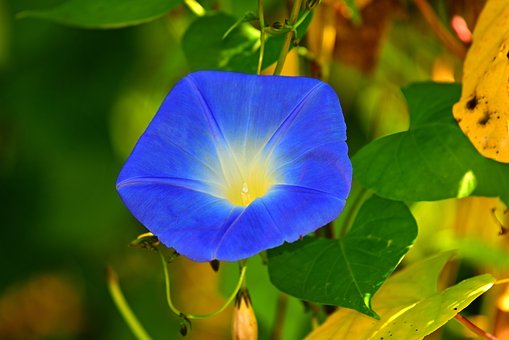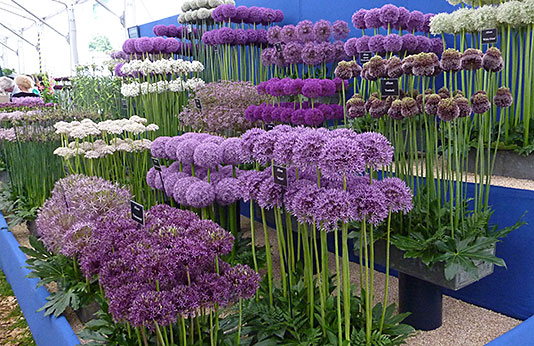Kids and Gardening: How About a Rainbow Garden?
Involving children in gardening offers a great many benefits, say experts, from family bonding, to encouraging healthy eating and teaching them responsibility.
One garden project you might consider is a ‘rainbow garden.’ Kids love the colors of the rainbow — red, orange, yellow, green, blue, indigo, violet!
To help you kick off such a plan, if your kids don’t already have the book, you could share with them the following 2 minute video: Planting a Rainbow by Lois Ehlert.
Once they are eager for the project, how about involving your children in the landscaping plan by having them draw flowers in each of the seven rainbow colors. We’re including an easy cheat sheet of plants by color below — which we are using with permission from The Homespun Hydrangea.
Of course, part of any landscape plan requires knowing which flowers come from bulbs, or seeds, etc., as well as the best time of year to plant each. We’ve selected one plant for each color and offer some tips for that plant. But you and your children may enjoy doing some of your own research.
Since your children will no doubt be eager to see the flowers this spring/summer, you can always get ready-grown plants at a local nursery, and plant from seeds and bulbs next year.
So let’s begin:
Red:
Tulips, Hummingbird Sage, Red Roses, Red Bee Balm, Mums, Geraniums, Primrose, Red Poppies, Red Monkey Flower, Coleus, Cosmos, Bird of Paradise, Red Lilies, Western Columbine, Zinnia, Begonia, Red Cactus Flower
When you want to go red, you can’t go wrong with rose bushes. Potted roses can be added to the garden any time, but if the roots are bare, plant these when the daytime temperatures are between 40 and 60 degrees F — or their dormant season (autumn through late winter/early spring). Look for disease-resistant tough roses.
Orange:
Orange Poppies, Tulips, Lantana, Blackberry Lily, Tiger Lily, Iceland Poppy, Helenium, Cosmos, Asiatic Lily, Marigold, Butterfly Weed, Red Hot Poker, Flowering Maple, Snapdragon, Hyssop, Minion Bells, Twinspur
With Butterfly Weed, you not only get bright, gorgeous orange, but, like the name says, you also attract butterlfies. Your youngsters will love that. Its clusters of blossoms bloom from early summer to first frost. It thrives in clay, rocky or dry soil and while it prefers full sun, it can take partial shade. These grow well from seeds, but since they are usually planted in fall, if you want them in the garden this year, consider using mail order or your local nursery.
Yellow:
Tulips, Snapdragons, Marigolds, Yellow Columbine, Yellow Butterfly Bush, Iceplant, Mums, Daisies, Gerber Daisy, Daylily, Sunflower, Daffodil, Primula, Yellow Rose, Gold Nugget, Indian Shot, Yellow Bee Balm
Another pollinator-friendly plant, Columbine will re-seed itself in your garden! Early spring or fall is the best time to plant either bare root or potted plants. They like well-drained moist soil. With very warm Long Island, NY, summers, it’s wise to give the plant some partial shade. If you plant from seed, it will take a full season before you get to enjoy them.
Green:
Green/Lime Rose, Mums, Hellebore, Daylily, Dianthus, Bells of Ireland, Hydrangeas, Mint, Catnip, Sage, Rosemary, Basil, assorted grasses, Coleus
Bells of Ireland are shell flowers that are loved as both ornamental and culinary plants. The outer bells are the goal, not the small and fragrant white flowers within. They don’t love hot and humid temperatures, so consider a shade cloth to maintain the hardiness of the plant. Check out the various nurseries available to you (or consider mail order) so you can enjoy Bells of Ireland this summer. Then, get the kids to help you harvest and save some of the seeds and plant them for a more extensive patch of bells next year.
Blue:
Brunerra, Delphinium, Hydrangea, Lead Plant, Hyacinth, Clematis, Blue Star, Aster, Bell Flower, Salvia, Balloon Flower, Asters, Morning Glories, Virginia Blue Bells, Forget Me Knots, Columbine
When it comes to morning glories, you’ll want full sun and fertile soil. Avoid too much nitrogen. If you soak the seeds, you may be able to see them sprout up this year without having to purchase grown plants. For more, check here.
Purple:
Salvia, Cat Mint, Tulips, Lilies, Balloon Flower, Iris, Clematis, Lavender, Bell Flower, Crocus, Snapdragon, Petunia, Verbena, Pansy, Fan Flower, Heliotrope, Purple Bee Balm, Thyme, Chives, Lilacs
At Deck and Patio, we’ve often included lovely purple allium in our landscaping plans. They are hardy and deer and rodent resistant. Their bulbs need to be planted in the fall, so to enjoy them this year you’ll need to pick up some plants from the nursery. Did you know that they are also members of the onion family? As you plan out your garden for next year, you can get some crocus bulbs for a double punch of purple next spring.
Some final tips:
Design the garden in a sweeping curve (left) — the eye can’t help but follow along such a layout. It’ll capture interest immediately.
Keep any plants that grow over 30 inches at least two to three feet away from the walkway and patio edges.
Keep thorny plants away from walk areas and avoid them entirely if you have toddlers.









